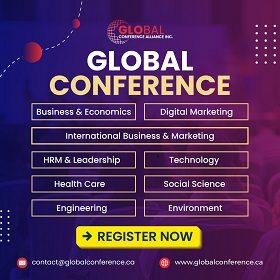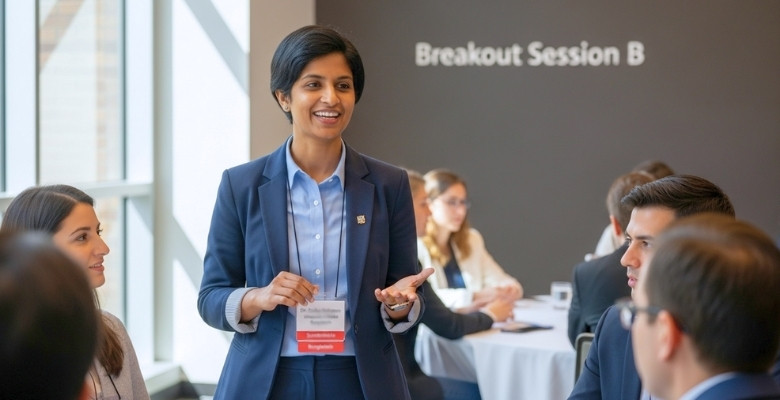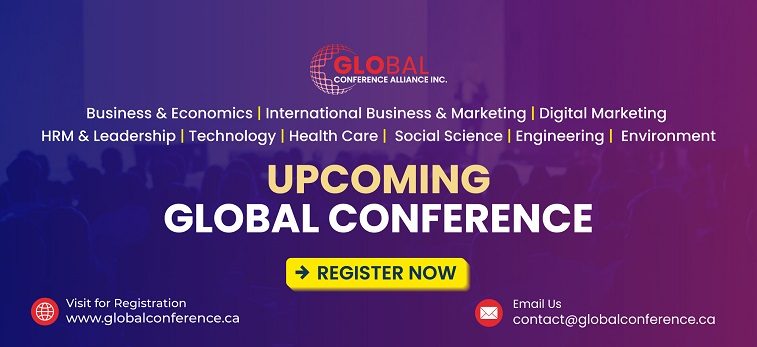Conferences are busy places filled with new faces, interesting talks, and exciting ideas. When you’re surrounded by so many people, it helps to know how to start a conversation. You might be wondering how to introduce yourself at a conference.
Introduce yourself at a conference by sharing your name, where you work or study, and your interest or reason for attending. Use friendly questions like “What brought you here?” to start conversations. Stay polite, smile, and keep your words simple and natural.
Want to know more about what to say during breaks, after a talk, or while presenting your own work? Keep reading, because this article gives you all the helpful tips and examples you need to introduce yourself with ease and confidence.
How to Introduce Yourself at a Conference?
Conferences can be exciting places where you meet many new people. You don’t have to be nervous if you know how to start. A simple and friendly introduction can help you talk with anyone. Read below to learn easy ways to introduce yourself at a conference.
Your Main Intro
Start by saying your name and where you work or study. Then, share what kind of work or topic you are interested in. You can add why you came to the event or what you hope to learn. For example, say, “I’m Amina from GreenTech, working on smart water systems.” After that, ask a question like, “What brought you to this session?” This helps the conversation move forward naturally and easily.
During Coffee Breaks
Look for someone standing alone or in a small group chatting casually. Walk up with a smile and say hello to start a friendly chat. You can mention something light, like the coffee or the last talk. Say, “Hi, I’m Rafi. That speaker was really good, right?” People are usually open to talking during breaks, so don’t feel shy. Keep it simple and listen to their reply with interest and a smile.
After a Talk
Wait for your turn if others are speaking with the presenter after the session. When it’s your chance, thank them and share something you liked about their talk. Say something like, “Your point on clean energy really made me think more.” After that, say your name and where you’re from. Ask a quick question about their topic if you have one. If they seem busy, ask nicely if you can email later.
During Q&A
When you ask a question in front of others, you can introduce yourself quickly. Start with your name and your organization or school, then ask your question. For example, “Hi, I’m Jannat from BRAC Institute. I have one question.” Make your question short, clear, and related to the talk. Don’t use that time to explain your own work. Asking clearly and briefly shows you are paying attention to the topic.
At Poster Sessions
Take a moment to read the poster before you start a conversation. Say something like, “Hi, this topic looks really interesting. Can you explain it?” After they finish, introduce yourself and share what you’re working on as well. This makes it easy for both of you to connect. You can also ask questions about their research. It’s a good way to find people with similar interests and learn something new as well.
As a Presenter
Stand near your poster and look friendly so others feel welcome. When someone walks up, smile and say hello first to start a chat. Say something like, “Thanks for stopping by. Want a short summary?” Be ready to explain your work clearly in one or three minutes. Let them ask questions if they want to. The more open and simple you are, the more people will enjoy your poster and talk to you.
Leaving a Chat
Sometimes you may need to leave a conversation without being rude or awkward. You can say, “It was great talking with you. I’ll catch the next session.” If you want to stay connected, ask for a business card or contact. Say, “Can we connect on LinkedIn?” or “May I have your email?” Ending nicely shows respect and makes the person more likely to remember you well after the event is over.
Making It Natural
Don’t worry about sounding perfect or having all the right words. When you’re introducing yourself at conferences, especially at international events like conferences in USA, UAE, Canada, or any other country where people come from different backgrounds, being friendly and simple really helps. A natural and honest tone works better than using big or hard words. Just stay calm, be polite, and talk like you normally would with someone new.
Asking About Others
Show interest in others by asking about their work or ideas first. You could ask, “What do you do?” or “What did you think of that talk?” Listen carefully to their answers and ask small follow-up questions. People enjoy sharing when someone truly listens and shows interest. These kinds of talks can help you build real and helpful connections that last.
Every new hello can lead to an exciting and helpful conversation. The more you practice talking, the easier it gets every time. A kind smile and simple words can go a very long way. Just take the first step and try without being afraid.
Why First Impressions Matter at Conference Self-Introductions?
First impressions during conference self-introductions set the tone for how others perceive you professionally. In the fast-paced environment of a conference, people often make snap judgments based on limited interaction. This first interaction can determine whether someone remembers you, wants to connect further, or trusts your expertise. A positive impression increases the chance of building valuable relationships and meaningful collaborations.
Body language plays an essential role in shaping these initial perceptions. Standing tall, maintaining eye contact, and offering a firm handshake communicate openness and professionalism. Subtle cues like nodding while listening or keeping your arms relaxed help establish trust and approachability. Negative body language, such as slouching or avoiding eye contact, can unconsciously signal disinterest or insecurity.
Equally important are your tone of voice and level of confidence. Speaking clearly with a calm, enthusiastic tone shows that you’re knowledgeable and approachable. Confidence doesn’t mean being loud or aggressive—it means being self-assured and authentic in your delivery. When people sense that you believe in yourself and your message, they are more likely to engage with and respect you. These factors combined ensure your introduction leaves a lasting, positive impact.
What to Include in a Professional Self-Introduction at a Conference?
Conferences are full of chances to meet new and interesting people. If you know how to talk about yourself clearly, you’ll feel more confident. A good self-introduction helps others understand who you are quickly. Read below to learn the simple things to include in a great introduction.
Say Your Name Clearly
You should always start by saying your name in a clear voice. Make eye contact and smile to show you’re friendly and confident. If you’re nervous, just speak slowly and don’t rush your words. This small step helps the person remember who you are later. It doesn’t matter if you’re just meeting someone or need to introduce in a conference presentation, your name should always come first and sound easy to catch.
Explain Your Role
It helps to say what you do or what you’re working on. People want to know what kind of work or projects you’re part of. Keep it short and simple so it’s easy to understand. Even if you’re still learning or new to something, that’s okay to share. The goal is to give others a quick idea of your role or your background without going into too much detail.
Share Your Interests
One way to make your introduction more fun is to talk about your interests. You could mention topics or fields that you enjoy learning about most. This can help others see if you share common ideas or goals. If someone also likes those things, it can start a good talk. Talking about what you like makes your introduction feel more friendly and easygoing.
Say Why You’re There
Make sure to include the reason why you came to the event. You can say you want to learn, meet people, or get ideas. That tells others what you hope to get from the conference. It also helps them know how they might connect with you. When you give a reason, it makes your introduction sound more complete and honest.
Keep It Simple
Try not to say too much or use very big words. You want the person to remember the main things you shared clearly. A short and neat introduction is often better than a long one. If it feels natural, people will enjoy talking with you more.
A strong introduction makes it easier to remember and talk to. When you’re clear and friendly, people feel happy meeting you. Don’t try to sound perfect—just be real and say it simply. That way, others will want to keep the conversation going.
Should You Use Humor or Personal Stories in Your Conference Introduction?
Using humor and personal stories in a conference introduction can be highly effective in engaging your audience and setting a positive tone. However, it’s crucial to understand when and how to deploy them professionally.
When it’s Appropriate to be Lighthearted or Personal:
- To break the ice and build rapport: A well-placed, relevant anecdote or a lighthearted observation can instantly make you more relatable and approachable. It helps disarm the audience and creates a sense of connection, especially if they don’t know you.
- In grabbing attention: In a sea of presentations, a memorable opening stands out. Humor or a compelling personal story can immediately pique interest and make your audience lean in.
- To illustrate a point or theme: If your humor or story directly ties into the core message of your presentation, it can serve as a powerful and memorable way to introduce your topic.
- For humanizing yourself: Sharing a glimpse of your personality or a relevant personal experience shows you’re a real person, not just an expert. This can build trust and make your audience more receptive to your message.
- To address a common experience: If the topic is complex or potentially dry, a touch of humor can lighten the mood. Similarly, a relatable story about a shared challenge can create empathy.
- When the audience and context allow: Consider the specific conference, the industry, the culture of the attendees, and the formality of the event. A highly academic or very serious conference might require a more subdued approach than a creative or industry-specific one.
Tips for maintaining a professional tone while doing so are important
Using humor or personal stories during a conference can make your talk more engaging. However, it’s just as important to keep your tone respectful and professional throughout.
For Humor:
- Keep it relevant: The humor should connect to your topic, the conference, or a shared experience of the audience. Avoid inside jokes that only a few will understand.
- Make it self-deprecating (carefully): Poking gentle fun at yourself can be highly endearing and professional. It shows humility and confidence.
- Avoid controversial topics: Steer clear of jokes about politics, religion, sex, race, or any potentially divisive subjects. The goal is to unite, not alienate.
- Know your audience: What’s funny to one group might not be to another. Research their demographics, interests, and the general tone of the conference.
- Keep it brief: A short, punchy opening joke or a witty remark is usually more effective than a lengthy setup.
- Don’t force it: Don’t try to be a stand-up comedian if humor doesn’t come naturally to you. Authenticity is key.
- Test it out: If possible, try your humorous opening on a trusted colleague or friend to gauge their reaction.
- Avoid telling generic jokes: Instead, look for humor in everyday truths or observations that your audience can relate to.
For Personal Stories:
- Ensure relevance: The story should directly relate to your expertise, the topic of your presentation, or the audience’s professional interests. It should have a clear takeaway that introduces your presentation.
- Keep it concise: Your introduction is not the place for a sprawling autobiography. Get to the point quickly and efficiently.
- Focus on a specific lesson: Share a transformative experience or a valuable lesson learned that directly informs your presentation.
- Show, don’t just tell: Use vivid language and details to make your story engaging.
- Be authentic and vulnerable (within limits): Sharing a genuine challenge or a moment of learning can be powerful, but avoid oversharing or making it sound like therapy. Maintain a professional boundary.
- Frame it professionally: Even a personal story should be presented in a way that establishes your credibility and sets the stage for the professional content to follow.
- Consider the emotional impact: Does your story evoke the desired emotion (e.g., inspiration, understanding, curiosity) that aligns with your presentation’s goals?
Both humor and personal stories can be excellent tools for a conference introduction when used strategically and professionally. The key is to be thoughtful about your audience, the context, and how your chosen element contributes to your overall message and professional image.
Examples of Effective Self-Introductions at Conferences
Here are sample scripts for effective self-introductions at conferences, especially for three common scenarios: meeting someone during a break, at a booth, and during a Q&A session. Each script includes a clear introduction, relevant context, and a natural lead-in for further conversation.
1. Meeting Someone During a Break
Goal: Make a connection and open the door for networking or collaboration.
Script: “Hi, I’m Taylor Morgan — I work in product strategy at GreenPeak Tech. I really enjoyed the last session on sustainable innovation. Are you also working in that space or just interested like me?”
Why it works:
- Clear name and role
- Ties to the shared experience (the session)
- Opens a conversation with a friendly question
2. At a Booth (as a Visitor)
Goal: Learn about the company/product and explore potential synergy.
Script: “Hi, I’m Jordan Lee — I lead data analytics at Horizon Retail Group. I’ve heard about your AI-powered POS systems and wanted to learn how they integrate with existing ERP platforms. Can you walk me through that?”
Why it works:
- Brief intro with name and role
- States interest clearly
- Leads with a specific, informed question
3. During a Q&A Session (Before/After Asking a Question)
Goal: Introduce yourself briefly and signal relevance.
Script (Before Asking a Question): “Hi, I’m Samira Patel from Nurture Health Systems. I focus on digital patient engagement. My question is about how you handled data privacy concerns during rollout—could you elaborate?”
Script (After the Talk, 1-on-1): “Hi, I’m Samira Patel — great presentation. I work at Nurture Health, and we’re also facing challenges around patient engagement. I’d love to hear more about how your team tackled onboarding—would you be open to connecting later?”
Why it works:
- Gives name, organization, and area of focus
- Connects the question to your work
- Smoothly asks to continue the conversation
A strong self-introduction at a conference doesn’t need to be long — it just needs to be clear, relevant, and open-ended. Focus on your name, role, and connection to the topic or person. Most importantly, show genuine interest and leave space for dialogue. These small moments of connection can often lead to meaningful collaborations, insights, or future opportunities.
Common Mistakes to Avoid When Introducing Yourself at a Conference
Introducing yourself at a conference might feel a little awkward, especially if you’re not sure what to say. You might feel nervous, stumble over your words, or forget what you wanted to say. That’s okay — it happens to almost everyone. But knowing what not to do can really help you feel more confident and make a great first impression, so keep reading!
- Don’t talk too much without a pause. Keep it short and clear so people don’t lose interest while you’re still speaking.
- Avoid using fancy or hard-to-understand words; just speak the way you usually talk so others feel comfortable with you.
- Try not to sound like you memorized a speech. Speak naturally, like you’re talking to a friend, not reading a script.
- Don’t be too general about what you do. Say something specific, so the other person understands what you’re really interested in.
- Skipping eye contact can make you seem unsure; just looking at the person while talking helps build a quick connection.
- Talking only about yourself can feel rude; ask the other person something too, so the conversation feels balanced and friendly.
- Don’t rush through your name and job. It’s important they hear and remember it, so say it clearly and with confidence.
- Avoid interrupting someone when they’re speaking. It’s better to wait your turn and show you’re listening before jumping in.
- Speaking too softly can make it hard for others to hear you; use a clear and calm voice without shouting.
- Don’t forget to smile; it’s a small thing, but it really helps make you seem open and easy to talk to.
Making a good introduction doesn’t mean being perfect—it just means being real and respectful. If you avoid these common mistakes, people will enjoy talking with you. Conferences are all about meeting people and learning. So relax, be kind, and let your personality shine.
How to Practice and Polish Your Conference Self-Introduction?
Practicing how to introduce yourself can really help you feel more confident. It’s not just about what you say, but also how you say it. Small things make a big difference when meeting new people. Let’s look at some easy ways to get better at it.
Practice with Friends
One of the best ways to get better is to try it with friends. Say your introduction to them like you’re really at a conference. They can give you tips or tell you if anything sounds confusing. Doing this a few times helps you feel more natural. The more you try it, the easier it becomes to remember your main points.
Make Small Changes
You don’t have to say the exact same thing every time. Change your introduction a little depending on the people or the event. Sometimes you might want to keep it short, and other times you can say more. Having a few versions ready can help you feel more prepared. It also keeps your words from sounding too practiced or boring.
Match the Setting
Pay attention to where you are and who’s around you. If it’s a big group or a formal setting, you might speak a little differently. But if it’s a small or casual moment, you can talk more freely. Knowing how to match your style to the setting makes you sound confident. It also helps others listen and respond better to what you say.
Watch Your Voice
Even if your words are great, the way you say them matters too. Speak clearly and not too fast so people can understand you. Try not to speak too quietly or sound unsure of yourself. Your tone should be friendly but sure. A strong voice shows that you believe in what you’re saying.
Practice Your Timing
Sometimes people speak for too long without knowing it. Practice your introduction so it’s short but still includes all the important parts. You don’t want to rush, but you also shouldn’t take too long. Keeping your timing right makes it easier to talk to. It also shows you respect the other person’s time.
Practicing your introduction helps you feel ready and confident at any moment. You’ll know what to say and how to say it better each time. A little effort goes a long way in making a great impression. Try these tips and enjoy the results.
How to Transition From Self-Introduction to Presenting Your Conference Research?
Sometimes, it’s hard to know when your introduction should end and your actual presentation should begin. You don’t want it to feel like a sudden jump. The key is finding a smooth way to connect both parts. Let’s look at how to do that in a way that feels natural and keeps your audience interested.
Start with who you are
Begin by sharing your name, where you’re from, and what you do, but do it in a relaxed and friendly way. You could mention what inspired you to work on this topic. This helps the audience connect with you as a person first. Keep it short—just enough to let them know who’s speaking before you start talking about your research. It’s not about your full story, just a few small things that lead into your topic.
Show why it matters
Once you’ve introduced yourself, tell the audience why your research matters in real life. Make it feel like you’re solving a small puzzle that helps form a bigger picture. Share a short example or a real-world problem your topic connects to. After introducing yourself, smoothly move into your paper’s background by leaving details like the methodology of a conference paper for later sections of your talk.
Connect your topic
Make the topic feel like a natural next step in the conversation. You could say something like, “That’s when I started wondering…” or “This led me to explore…” to move into your research. It should feel like one thought is leading to another, not like you’ve jumped into a whole new speech. When it flows like that, people stay with you.
Build a little story
Turn the beginning of your talk into a mini-story. You can include a problem you noticed, a small challenge, or something that caught your interest. Then explain how that pulled you into the research. People like hearing short stories—it helps them care about what you’re going to say next. Just make sure it’s simple and connects clearly to your topic.
Keep the tone friendly
Make sure your voice and words still sound like you, even when you’re moving into the research. Don’t suddenly become super formal just because you’re talking about facts. Stay calm, clear, and friendly. This keeps the mood relaxed and helps the audience stay focused. You’re not just sharing facts—you’re telling them something you care about.
When your self-introduction blends naturally into your topic, the whole talk feels smoother. It doesn’t have to be perfect, just easy to follow. Be yourself, take your time, and keep it clear. That’s what really keeps people listening.
FAQs About How to Introduce Yourself at a Conference?
Conferences often bring together people from different places and ideas. If you’re still unsure about how to talk about yourself in such events, that’s totally okay. Many people have the same questions when it comes to introductions. Below are some helpful FAQs to guide you even more.
How to Stay Calm Before Introducing?
It’s normal to feel nervous before speaking to new people. Take a deep breath and remind yourself that it’s just a simple conversation. Try to smile and think of the other person as a friend. The more you do it, the easier it becomes each time.
What If I Forget What to Say?
If you forget, don’t worry—just pause and smile. You can start again with something simple like your name. Most people understand if you get a little stuck. It’s better to stay calm and speak slowly than to rush or panic.
Can I Use Notes for Help?
Yes, having a few short notes is totally fine. You can write down your name, role, and one key thing you want to say. Just don’t read everything word for word. Use your notes to guide you, not to replace your natural voice.
What if the Person Doesn’t Respond?
Sometimes people may be shy or unsure as well, and that’s okay. Give them a chance to reply, and if they don’t, you can politely move on. Don’t take it personally—try talking to someone else nearby. Not every introduction turns into a full conversation, and that’s normal.
How Do I Join a Group Conversation?
Wait for a pause in the group’s chat before speaking. Then, smile and say something like, “Hi, do you mind if I join?” Most people will welcome you if you ask politely. Once you’re in, listen first before jumping into the talk. It shows respect and helps you fit in naturally.
Should I Talk About My Work a Lot?
It’s good to talk about your work, but not too much. Share just enough so people understand what you do. Then ask about them to keep the conversation fair. People enjoy it more when both sides get to speak and listen.
What If I Don’t Know Much About the Topic?
That’s okay—you’re there to learn, not to know everything. Just say something like, “I’m new to this but very interested.” Asking questions is a great way to join the conversation. Most people will be happy to explain and include you.
Can I Introduce Myself More Than Once?
Yes, you can introduce yourself to different people at different times. Even if someone heard you before, saying your name again helps them remember. Don’t feel strange repeating your intro in new situations. Conferences have many moments to meet new faces.
How Do I End a Conversation Politely?
You can say something simple like, “It was nice talking with you.” If you want to keep in touch, ask for their email or social media. If not, just smile and say you’re heading to the next session. Ending kindly leaves a good final impression.
What If I Speak a Different Language?
If English isn’t your first language, speak slowly and clearly. Most people at international conferences understand that not everyone speaks perfectly. Just try your best, and don’t be afraid to ask if they can repeat something. Being respectful and friendly matters more than perfect grammar.
Conclusion
Introducing yourself at a conference doesn’t have to be hard or stressful. All you need is a simple and friendly approach that matches the moment. Whether you’re meeting someone at a booth or asking a question during a session, just be yourself, speak clearly, and show interest. Now you know how to start conversations with ease and confidence, and you’ve got your answer to how to introduce yourself at a conference.
Before you go, just remember: smile, make eye contact, and don’t overthink your words. Ask questions, listen closely, and leave each chat with kindness. Every person you meet could turn into a good connection. Stay relaxed, be polite, and enjoy the experience. Wishing you the best for your next conference!









